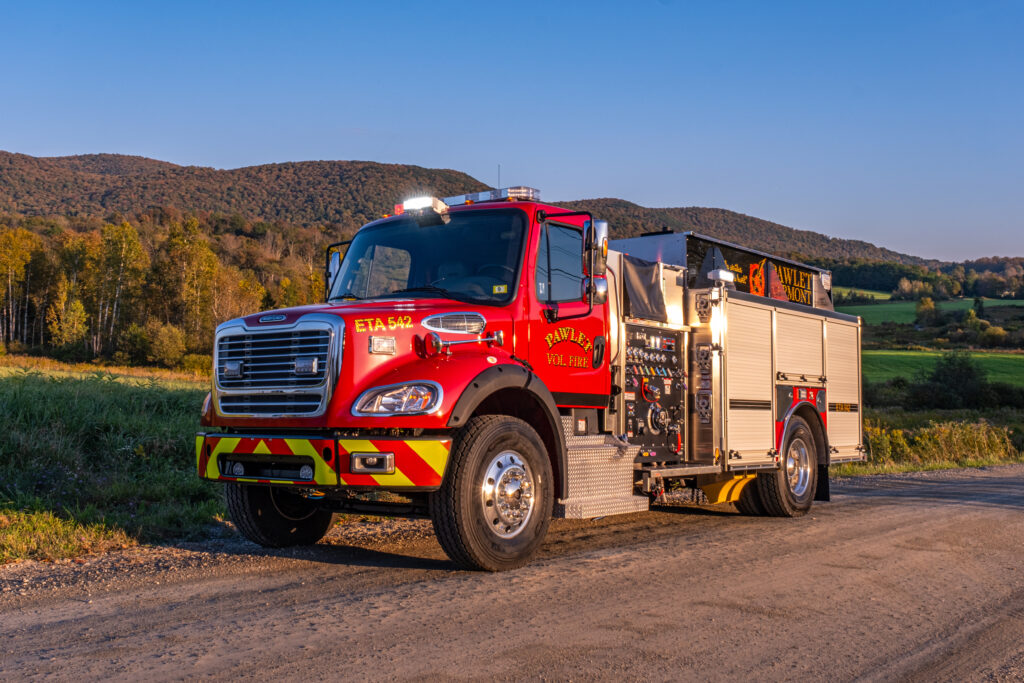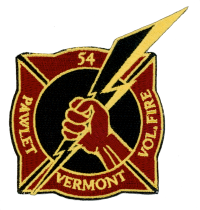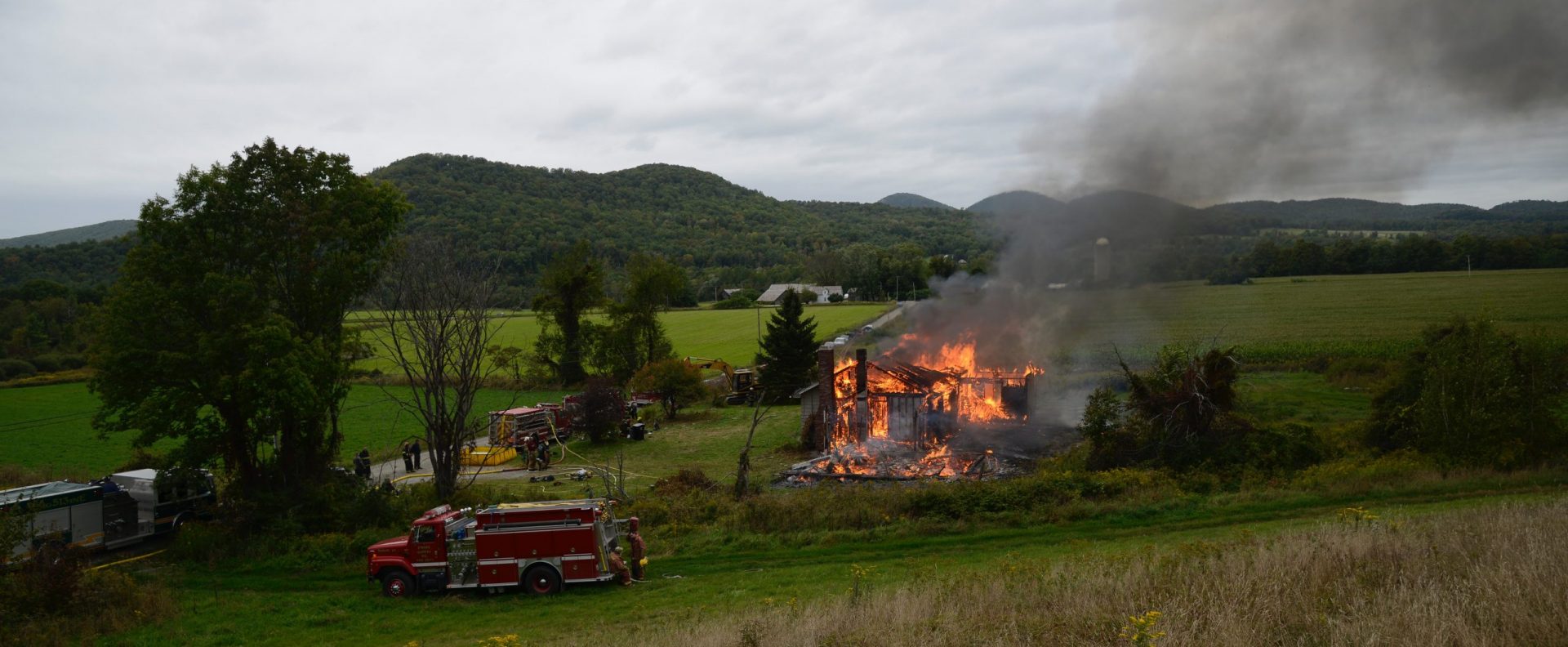The PVFD conducts fire suppression, rescue, and other emergency response operations at a moment’s notice, 24 hours a day, 7 days a week, 365 days a year. Based from a station on Rt. 133 in Pawlet Village, in the southwestern corner of Rutland County, Vermont, we are responsible for a 25 square mile district, encompassing the eastern half of Pawlet. We also provide fire protection and emergency response to surrounding fire districts through a robust system of mutual aid, in which neighboring fire departments call upon one another for assistance.
Like many fire departments in Vermont today, the Pawlet Volunteer Fire Department is organized as a 501(c)3 not-for-profit organization, not a municipal agency. Our department is financed partially by the Town of Pawlet and partially through the direct support of the general public. Our department is one of nine fire departments in Western Vermont dispatched by the Washington County (NY) Department of Public Safety.
Pawlet’s fire department is an all-volunteer outfit, comprised entirely of individuals who donate their time without monetary compensation. PVFD emergency operations are led by Fire Chief Jon Weiss, and our corporate operations are led by President Lars Lund.
Firefighting– and So Much More
Our agency was founded to protect our community from building fires. This is still the core of our mission, but today we do much more. The Pawlet Volunteer Fire Department is the first response agency for motor vehicle crashes, hazardous materials incidents, flammable gas emergencies, carbon monoxide incidents, and wildland fires. We assist the Vermont State Police with emergency traffic control and search and rescue operations. We mitigate hazardous situations on our roads, such as trees and wires down. We assist the Granville Rescue Squad at medical emergencies that require additional manpower or the prompt delivery of basic life support services. We work with the Pawlet Office of Emergency Management to mitigate natural disasters such as floods. This “all hazard” model means whenever Pawlet needs our help, we roll!
The Pawlet Volunteer Fire Department also provides a range of non-emergency services to our community.
Training to Win
Pawlet’s firefighters may be unpaid, but are professionals nonetheless, and hold themselves to nationally-recognized standards for fire service training. Most firefighters on our department have logged several hundred hours of fire service training and many of our members have earned firefighter professional certifications. This accredited training is delivered through the Vermont Fire Academy. We conduct over 70 hours of training per year right here in Pawlet, including mutual aid drills, classroom training sessions, live-fire exercises, and hosted Vermont Fire Academy programs.
Apparatus & Equipment
The core of our emergency response equipment is our fire trucks, or “apparatus” in the parlance of the fire service. Pawlet currently operates two combination pumper/tankers and a “brush” truck, each fully equipped with all manner of equipment, from hoses and axes that would be familiar to a firefighter of yesteryear to advanced modern electronics such as thermal imaging cameras, multi-gas detectors, and defibrillators. Each apparatus is maintained with pride to provide optimal readiness for emergencies in our community.
ETA 542

Engine/Tanker Apparatus 542 is our first-due engine, meaning the first truck to roll to a fire, motor vehicle incident, or most other types of emergencies in Pawlet. Custom-built for Pawlet by HME Ahrens-Fox on a Freightliner M2 chassis, 542 is the newest addition to our fleet, entering service in October of 2023. Its features include a Hale Q-Max fire pump rated at 1,500 gallons-per-minute, a 1,000 gallon tank with quick dump, and a Trident air primer. A rear suction intake allows the truck the unique capability of backing in to a water source. For discharge, firefighters have a deck gun on an 18″ telescoping extension, and four pre-connected attack lines: two 1-3/4″ lines and a 2-1/2″ line in a crosslay configuration, and a second 2-1/2″ line set up for rear deployment. The pump is equipped with flow meters and proportioning Class A foam injection on each crosslay. The foam system feeds off of an integral 30 gallon foam tank, or can be fed directly from buckets. Stowed equipment includes a 250gpm portable pump, three types of power saws, medical equipment including an AED and oxygen, PPV and PPV fans, four SCBA or “air packs,” and a wide array of hand tools and electronics. A Cummins L9 turbodiesel producing nearly 500 shaft horsepower moves all of this around and provides ample power to the fire pump via PTO. A LED lighting package provides scene visibility and some serious light for negotiating our back-roads. OnSpot automatic tire chains help ensure year-round traction.
ETA 542 carries 1400′ of 4″ large diameter water supply hose loaded into an elevated bed at the rear of the truck. This allows the hose to be deployed or “laid” behind the truck as it drives into a fire scene or a fill site. 400′ of dead-laid 1-3/4″ and 600′ of 2-1/2″ attack hose rounds out the hosebed. 542 also carries two ground ladders, an attic ladder, various long tools and three 10′ hard suction sections stowed in a through-tank tunnel for fast, easy retrieval. A 20′ roof/straight ladder (which folds in half) completes the ground ladder package.
ETA 541

Pawlet’s second pumping apparatus is a 2001 E-One pumper/tanker on an International chassis. It is equipped in much the same manner as ETA 542, with a bit more emphasis on water supply tactics, and provides us with the ability to respond to much larger emergencies than a single apparatus could handle. Like 542, this combination pumper/tanker uses its powerful diesel engine to handle water at rates of up to 1,250 GPM once parked at the scene of a fire, and is also capable of serving as a tanker. It carries 1,250 gallons of water, a 1,500 gallon portable tank, and has a rear-mounted quick-dump.
Brush 544

544 is a Type 6 wildland apparatus custom-built by E-One on a 2004 Ford F450 4×4 chassis. It is equipped with a 340 gallon water tank and a high-pressure stand-alone diesel pump with “pump and roll” capabilities and Class A foam injection. Though outfitted extensively for the wildland firefighting role, 544 also gets utilized in a utility capacity, and rolls to a variety of incidents throughout the year. It carries a various recovery tools including a permanently-mounted winch, equipment for general-purpose firefighting, rescue and medical equipment, and signs and cones for traffic incident management.

